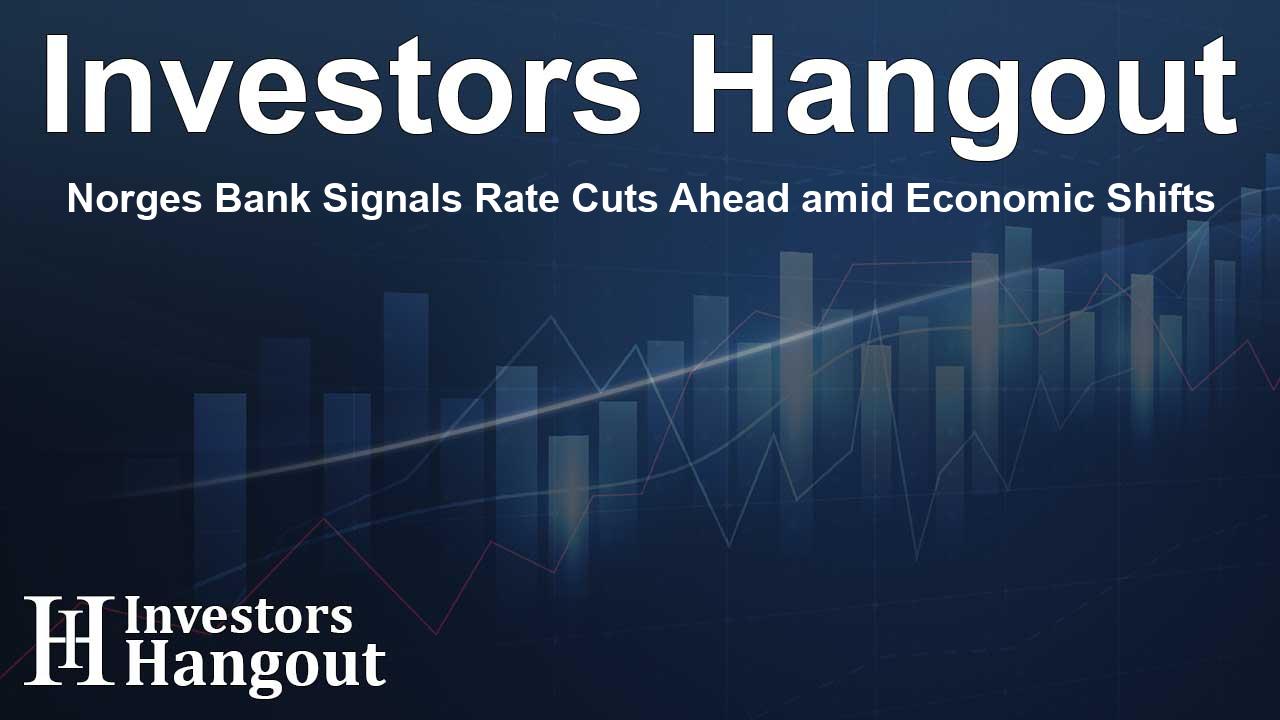Norges Bank Signals Rate Cuts Ahead amid Economic Shifts

Norges Bank Maintains Policy Rate Amid Future Cuts
In a recent announcement, Norges Bank revealed its decision to keep the policy rate steady at 4.5%. This aligns with what many forecasters were expecting. However, the central bank’s statement hints at a forthcoming change, suggesting that rate cuts may begin as soon as March.
Shift Towards Easing Monetary Policy
Norges Bank's recent stance reflects a trend seen in other developed market central banks. By maintaining the rate for now, the bank appears to be preparing for a potential shift towards easing monetary policy, starting with a likely 25 basis point cut in the near future. This cautious approach speaks to the delicate balance central banks must strike amidst varying economic pressures.
Current Economic Climate
The economic situation remains complex, and while Norges Bank indicated that a restrictive monetary policy is still necessary, forecasts suggest a planned decrease in the policy rate over the coming years. Previous projections hinted at a gradual decline, expecting the rate to average around 3.8% by late 2025, and reaching benchmarks of 3.2% and 2.9% by the end of 2026 and 2027 respectively.
Analysts Weigh In on Future Rate Cuts
Analysts, including those from Capital Economics, have shared insights regarding this anticipated loosening of policy. They describe the expected pace of rate cuts as relatively slow, suggesting that the road ahead will not see drastic changes overnight. Rate forecasts from central banks can often be unreliable beyond short timeframes, creating a cautious optimism among analysts.
Inflation Trends Influencing Decisions
Capital Economics noted that with the current inflation trends, it is feasible for Norges Bank to implement quarter-on-quarter cuts of 25 basis points. This could lead the policy rate down to approximately 3% by mid-2026, which indicates a significant shift from the current stance and showcases a strategic movement towards accommodating economic conditions.
Future Implications for Monetary Policy
The upcoming months are critical for Norges Bank as it navigates the delicate landscape of monetary policy and economic recovery. The potential for rate cuts could have wide-ranging implications for various sectors, influencing everything from consumer spending to business investments. How these decisions unfold will be closely monitored by economic stakeholders.
Frequently Asked Questions
What is Norges Bank's current policy rate?
Norges Bank's current policy rate is maintained at 4.5%.
When does Norges Bank plan to cut interest rates?
Norges Bank indicates the possibility of starting to cut interest rates in March.
What do analysts predict regarding future rate cuts?
Analysts predict that any rate cuts will be gradual, possibly at a pace of 25 basis points per quarter.
How does inflation influence Norges Bank's decisions?
Current inflation trends are likely a significant factor in Norges Bank's decision-making process regarding interest rates.
What could the policy rate be by mid-2026?
Forecasts suggest that the policy rate could drop to around 3% by mid-2026.
About Investors Hangout
Investors Hangout is a leading online stock forum for financial discussion and learning, offering a wide range of free tools and resources. It draws in traders of all levels, who exchange market knowledge, investigate trading tactics, and keep an eye on industry developments in real time. Featuring financial articles, stock message boards, quotes, charts, company profiles, and live news updates. Through cooperative learning and a wealth of informational resources, it helps users from novices creating their first portfolios to experts honing their techniques. Join Investors Hangout today: https://investorshangout.com/
Disclaimer: The content of this article is solely for general informational purposes only; it does not represent legal, financial, or investment advice. Investors Hangout does not offer financial advice; the author is not a licensed financial advisor. Consult a qualified advisor before making any financial or investment decisions based on this article. The author's interpretation of publicly available data presented here; as a result, they should not be taken as advice to purchase, sell, or hold any securities mentioned or any other investments. If any of the material offered here is inaccurate, please contact us for corrections.